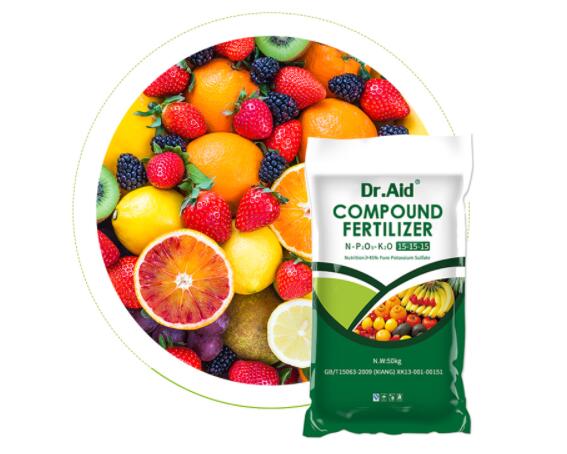What does sulphur do in Fertilizer?
Nitrogen (N), phosphorus (P) and potassium (K) are key components of a fertilized crop. But to achieve yields and more nutritious food, crops need sulfur (S).
banana bunch covers But to achieve yields and more nutritious food, crops need sulfur (S).
Why is sulfur such an important nutrient?
Sulfur is an essential component of life on Earth. Sulfur is present in all crops and plays an important role in plant metabolism. Sulfur is essential for the formation of plant proteins, amino acids, some vitamins and enzymes.
Most sulfur-containing compound fertilizers also contain nitrogen, highlighting the close link between these two elements. Sulfur is part of the enzymes required for nitrogen uptake, and a deficiency of sulfur can severely impede nitrogen metabolism. Together with nitrogen, sulfur is capable of forming the amino acids needed for protein synthesis. It is present in fatty acids and vitamins and has an important impact on the quality and taste or smell of crops.
Sulfur is also primarily involved in photosynthesis, overall energy metabolism and carbohydrate production.
As with any essential nutrient, sulfur has a number of key functions in plants:
â–³Chlorophyll formation allows plants to produce starch, sugars, oils, fats, vitamins and other compounds through photosynthesis.
â–³Protein production. Sulfur is a component of three S-containing amino acids (cysteine, cystine and methionine), which are the building blocks of proteins. About 90% of plant S is found in these amino acids.
â–³Oil synthesis. This is why adequate amounts of sulfur are so important for oilseed
â–³Activation of enzymes, which contribute to the biochemical reactions of the plant.
â–³Increased crop yield and improved product quality, both of which determine the market price of farmers' products.
â–³Regarding crop quality, S improves the percentage of protein and oil in seeds, the quality of milled and roasted grains, the marketability of copra, the quality of tobacco, the nutritional value of forage, etc.
â–³It is related to the specific metabolic and protoplasmic structural characteristics of plants.

Classification of sulfur fertilizers
Most sulfur-containing fertilizer materials can be generally classified into four categories: 1) sulfate-containing fertilizers, 2) elemental sulfur-containing fertilizers, 3) fertilizers containing a combination of sulfate and elemental sulfur, and 4) liquid sulfur fertilizers.
Fertilizers containing sulfate
Fertilizers containing sulfates provide most of the fertilizer S applied to the soil. these materials have the advantage of providing S primarily in the form of SO 4 -2 as a component of a multi-nutrient fertilizer that is immediately available for plant uptake. The most readily available and popular sources are ammonium sulfate (AS), single calcium superphosphate (SSP), potassium sulfate, and potassium and magnesium sulfate.
Fertilizers containing elemental sulfur
Fertilizers based on elemental S are the most concentrated S carriers. Modern technology has increased their use for direct application or as additives to NPK fertilizers.
Liquid sulfur fertilizers
Low water solubility has hindered the use of several sulfate fertilizers, especially in liquid formulations, which have become important.
How much sulfur do crops actually need?
When it comes to sulfur, crops are not equal. For some crops, soil supplies may be adequate, while other crops can be expected to experience severe losses in volume and yield without proper sulfur fertilization. Sulfur fertilization is usually guesswork. How much is enough?
Sulfur requirements
Some crops require more sulfur than others. In general, the higher the sulfur requirement, the higher the sensitivity to deficiency. Oilseed rape has a very high uptake rate, but most of the sulfur remains in the plant residue.
Uptake dynamics
Cumulative uptake is only one aspect of sulfur demand. Uptake kinetics is another important aspect. Crops with short growth periods require large amounts of sulfur in a short period of time. Plants with longer vegetation cycles have more time to recover sulfur from the soil and are therefore less dependent on external supplies. Due to its short vegetative cycle and high uptake rate, oilseed rape has a particularly high sulfur requirement. As a result, sulfur deficiency can lead to yield losses of up to 1 or 2 tons/ha.
During the growing season, the sulfur requirements of rapeseed and wheat far exceed the sulfur provided by the soil. during May, typically wheat lacks half of its sulfur requirements and rapeseed lacks two-thirds of its sulfur requirements.
The right source of nutrients
Plants need sulfur in the form of sulfate. This is the only form of sulfur that can be taken up by roots and is the form used in plants. Plants cannot take up elemental sulfur, which must first be converted to sulfate by soil microorganisms; this process can take anywhere from a few days to a few weeks, depending on soil temperature and moisture conditions.
Similarly, plants prefer nitrogen in the form of nitrate. This is the form most readily absorbed by plants, although plants can also take up nitrogen as ammonium, but less efficiently, and must convert it to nitrate before it can be used. Plants cannot take up urea, which must also be converted into a usable form by soil microorganisms.
We are manufacturer of sulfur fertilizer. Whether it's a question, a suggestion, or a complaint, we'd love to hear it. You can get in touch with us by email, by phone, or by filling out one of our online forms.